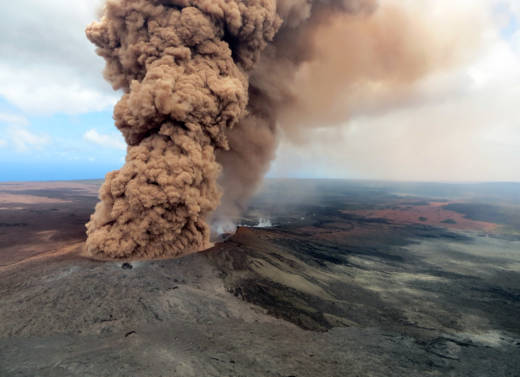To predict the effects of injecting particles into the atmosphere to reflect sunlight back into space, researchers at U.C. Berkeley observed cases of natural geoeningeering: volcanic eruptions.
While emissions from volcanoes do decrease surface temperatures, the researchers found that the process did nothing to offset crop damage from rising global temperatures.
Researchers collected data from past volcanic eruptions, which naturally spew sun-reflecting sulfate particles into the atmosphere, to provide the first estimates of how these particles effect the quantity and quality of sunlight, and how these changes in turn impact global crop yields.
Specifically, they looked at the impact of sulfate particles on local temperature, rainfall, and cloud cover and how these changes affected a number of crops: corn, rice, wheat and soybean.
After crunching the data, they found that any improvements in crop yields from cooler temperatures were negated by reduced yields due to less sunlight reaching the plants, according to lead author Jonathan Proctor, an agricultural economist at U.C. Berkeley.
“Crops needs cooler conditions to grow but they also require bright sunlight,” says Proctor. “It’s like using one credit card to pay off another. You end up in the same position where you started.”
While the resulting cooler conditions protected crops from the effects of extreme heat, the changes in sunlight levels led to reduced yields.
“Our results suggest that the side effects of the treatment are just as bad as the original disease,” says Proctor.
But Proctor says there is evidence to suggest that using different particles that do a better job of scattering light, and therefore allowing more of it to reach plants, may yield better results.
“If you could design particles better, perhaps you can mitigate some of the damages to crop yields,” he says. “That said, more uncertainty arises because once you begin tweaking things, you may observe more side effects. And we’ve never seen alternative particles injected in huge amounts into the atmosphere.”
Despite the disappointing findings, Proctor cautions against ruling out solar geoengineering as a potential tool in the fight against climate change.
“We only focused on the agricultural sector but this could still be an incredibly important and useful technology in other sectors,” he says. “Climate change will continue to have damaging effects on the world and our goal as scientists is to chip away at the uncertainty.”

